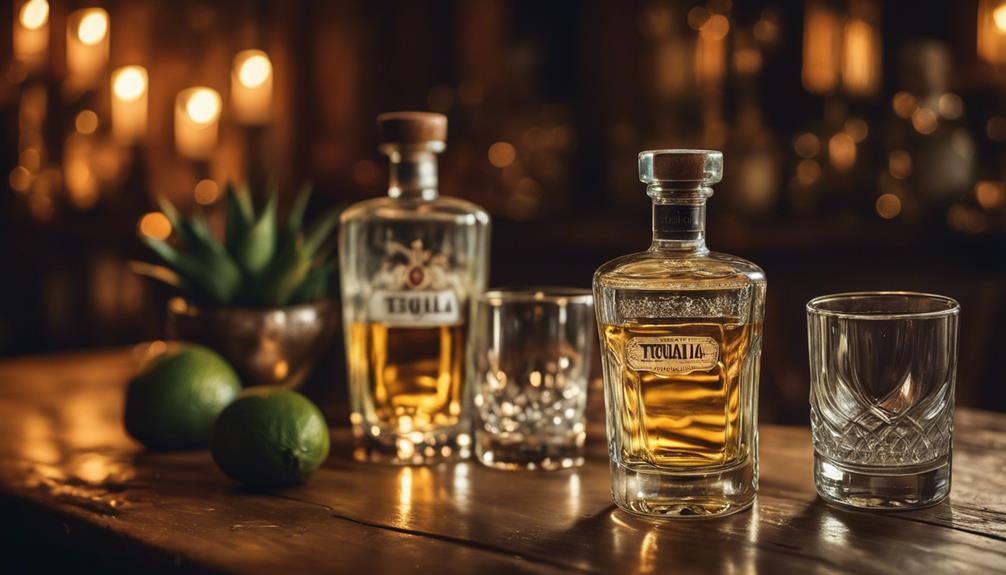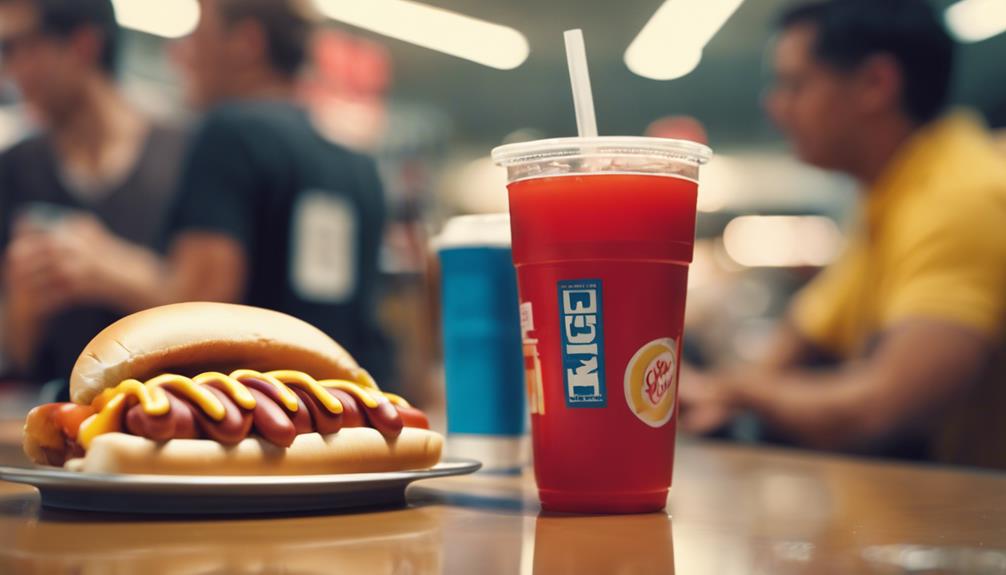Uncorking luxury means exploring rare and valuable alcoholic beverages that embody both opulence and craftsmanship. From cognacs like Rémy Martin Black Pearl Louis XIII, priced at $165,000, to the astounding $2 million Henri IV Dudognon Heritage, the market presents extraordinary spirits. Vintage whiskeys, such as The Dalmore 62, and exclusive gin collections are also highly desired. In addition, luxurious champagnes and rare tequilas, including diamond-encrusted bottles, represent the height of fine spirits. Each bottle is a testament to artistry, making them prized collectibles for discerning connoisseurs. Explore the charm of these exquisite offerings as the journey unfolds.
Key Takeaways
- Exclusive spirits like Henri IV Dudognon Heritage Cognac and D'Amalfi Limoncello Supreme showcase extraordinary craftsmanship and high value, appealing to collectors.
- Rare whiskeys, such as The Dalmore 62 and Bowmore 1957, are celebrated for their limited production and rich flavor profiles, making them coveted investments.
- Luxurious gin brands, including Hendrick's and Monkey 47, feature small-batch production and unique botanicals, transforming gin into a collectible art form.
- Opulent champagne, exemplified by Armand de Brignac Rosé 30L Midas, represents the pinnacle of luxury with meticulous attention to detail and exclusivity.
The Most Expensive Cognacs

Exploring the domain of luxury cognacs reveals a selection of exquisite bottles that not only showcase exceptional craftsmanship but also command staggering prices in the collector's market.
Among the most notable is the Rémy Martin Black Pearl Louis XIII, priced at $165,000, which features a blend of 1,200 Eaux-de-vie aged between 40 to 115 years.
Another remarkable offering is the Henri IV Dudognon Heritage Cognac Grande Champagne, valued at $2 million, distinguished by its stunning packaging of sterling platinum and 24-carat gold, adorned with over 6,000 diamonds.
These bottles epitomize exclusivity and heritage, appealing to discerning collectors and connoisseurs who appreciate the intricate artistry and history behind each decanter.
The luxurious nature of these cognacs elevates them beyond mere beverages into coveted investments.
Rare and Valuable Whiskeys

The domain of rare and valuable whiskeys presents an impressive array of exceptional bottles, each distinguished by age, flavor complexity, and exclusivity, much like the luxurious cognacs previously discussed.
Notable examples include The Dalmore 62, aged for 62 years with only 12 bottles produced, showcasing a rich flavor profile that captivates aficionados.
Bowmore 1957, a 43-year-old Islay whiskey, is celebrated for its unique production and limited availability, further enhancing its desirability.
The Nuns Island whiskey, distilled in the 1800s, holds significant historical value, with no known unopened bottles remaining.
Collectors enthusiastically seek these rare spirits, each representing not only remarkable craftsmanship but also an investment in the ever-evolving landscape of luxury beverages.
Luxurious Gin Collections

Luxurious gin collections have emerged as a prominent segment within the high-end spirits market, showcasing exquisite craftsmanship and unique flavor profiles that appeal to discerning collectors and connoisseurs.
Renowned distilleries are increasingly focusing on small-batch production, utilizing rare botanicals and innovative distillation methods to create exceptional gins. Limited edition releases, often presented in artistically designed bottles, enhance their appeal and exclusivity.
Collectors seek these unique expressions not only for their taste but also for their potential investment value. Brands like Hendrick's and Monkey 47 have established themselves as leaders in this arena, often collaborating with artists to produce unique packaging.
This intersection of art and fine spirits has elevated gin from a simple mixer to a luxurious collectible.
Opulent Champagne Bottles

A select group of opulent champagne bottles exemplifies the pinnacle of craftsmanship and extravagance in the world of fine spirits. Among these, the Armand de Brignac Rosé 30L Midas stands out, not only for its colossal size—equivalent to 40 standard bottles—but also for its striking design, making it a centerpiece at extravagant celebrations.
Another notable entry is the limited-edition champagne from Champagne Krug, which is often released in exquisite decanters that highlight the artistry involved in its creation. These bottles are not simply vessels; they embody a celebration of luxury, rarity, and meticulous attention to detail.
Collectors and connoisseurs alike vie for these exceptional bottles, marking them as symbols of status and sophistication in the champagne sector.
Unique Spirits and Brandy

Exclusivity and rarity define the domain of unique spirits and brandies, where exceptional craftsmanship and historical significance converge.
Iconic offerings such as Rémmy Martin Black Pearl Louis XIII and Macallan Valerio Adami 1926 exemplify this elite category, showcasing limited production runs and age statements that command staggering prices.
The Henri IV Dudognon Heritage Cognac, adorned with diamonds, epitomizes luxury, while Mendis Coconut Brandy pushes boundaries with its unprecedented $1 million price tag.
Each bottle tells a story, blending artistry with distilling heritage, attracting discerning collectors.
As the market for unique spirits continues to evolve, the allure of these exceptional beverages remains unparalleled, representing the pinnacle of indulgence for connoisseurs worldwide.
Exquisite Tequila Offerings

Tequila has evolved into a sophisticated spirit category, showcasing exceptional craftsmanship and unique expressions that captivate both collectors and enthusiasts alike.
Among the most exquisite offerings, luxurious tequila brands have emerged, often encompassing remarkable artistry and rarity.
- Pasíon Azteca, Platinum: A diamond-encrusted bottle containing four-year-old tequila, adorned with over 6,000 diamonds.
- Tequila Ley .925: Known for its platinum and gold-plated bottle, this tequila represents luxury and exclusivity.
- Casa Dragones Joven: Handcrafted and small-batch, this tequila is celebrated for its smoothness and rich flavors.
- Don Julio 1942: Aged to perfection, this tequila is revered for its complexity and elegance.
Record-Breaking Limoncello Bottles

Record-breaking limoncello bottles have emerged as remarkable symbols of luxury, showcasing not only exceptional craftsmanship but also the fusion of fine spirits with high-value artistry.
A prime example is the D'Amalfi Limoncello Supreme, priced at an astounding $44 million. This exquisite bottle is adorned with three single-cut flawless diamonds totaling 13 carats and features one of the world's rarest diamonds, weighing 18.5 carats.
The design transcends traditional limoncello packaging, transforming it into a stunning work of art. Such a luxurious offering epitomizes the intersection of high-end spirits and exclusive collectibles, appealing to elite connoisseurs and collectors alike.
The record-breaking nature of these bottles places them at the forefront of the luxury beverage market.
Conclusion
In the domain of luxury spirits, each bottle stands as a tribute to human artistry and dedication, shimmering like a jewel in a collector's trove.
The intoxicating allure of these exquisite beverages transcends mere enjoyment, inviting enthusiasts to immerse themselves in a world where craftsmanship meets opulence.
As the sun sets on the vibrant landscape of fine spirits, the value of these rare elixirs continues to soar, solidifying their place as both coveted treasures and enduring symbols of status.









